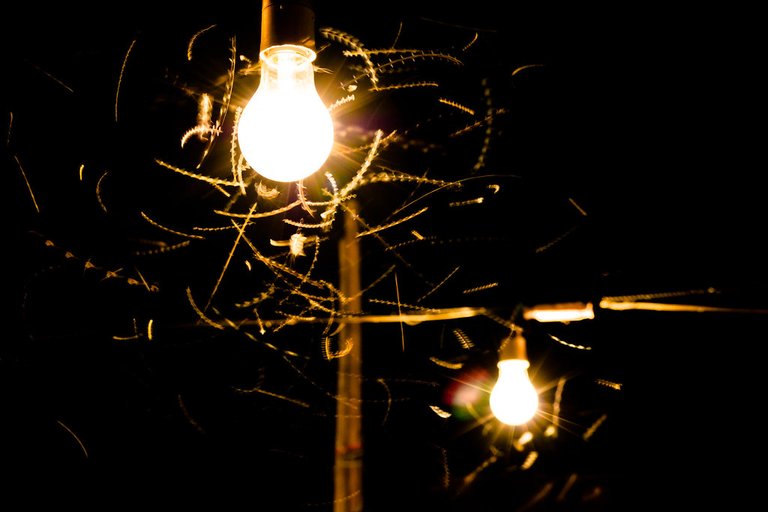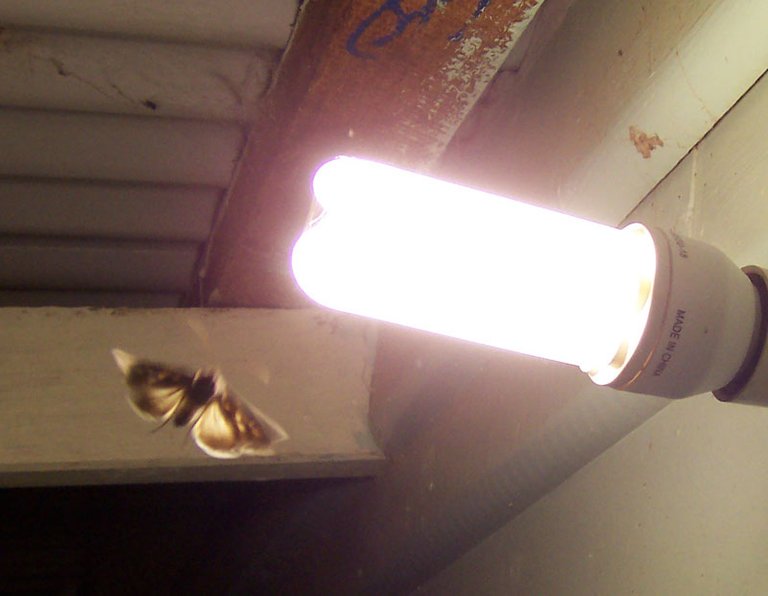Do Insects Fly Fowards Light bulbs At Night?
When you switch on your light at night, you find insects rushing towards the light and this is also common with streetlights For many years, I have tried to understand why this happens for years and so have scientists. At one time, scientists believed that insects confused the light from electricity with sunlight but insects aren't seen to be attracted to sunlight, so what could it be?
Scientists at one point believed that insects were attracted to heat but none of the artificial light is as hot or produces enough heat like the sun, moreover, oil lamps and oil lanterns do not attract insects to them. LED lights which emit almost no heat still attract insects attracted to them. At one time, they believed insects followed the moon but when studies were done, it was learned that insects do not get attracted to the moon, nor do they behave in any way during or without the moon.
To understand why insects fly towards a light bulb, scientists decided to carry out an experiment. They placed different bulbs with different types of light at different positions and observed them with different cameras. They realize that the insects aren't flying towards the direction of the light sources rather they are flying in the opposite direction of the light like they are trying to run away from the light.
Insects have the ability to respond to dorsal light, and this sense help them identify light through a biological sensor in their back. With the ability to respond to dorsal light, when an insect is in the sun, they turn their back to it and the lower part of the body which is usually the abdomen face downwards allowing them to find food quickly during the day.
The response to light helps them identify where is up and where is down as well as help them with orientation. When humans began to create fires, we began to put them in tiny forms to create lanterns and bulbs and then we invented the light bulb. With the experiment carried out, scientists learned that insects do not mistake light bulbs for sunlight or moonlight, rather they respond to dorsal light just like they will do with the sun during the day. Scientists realized that the behavior of the insects in the presence of artificial lights at night were not voluntary.
When the insect moves around the light, its body is only trying to assess where is up and down thereby correcting its orientation but in reality it is not doing anything because the movement is involuntary. They leave this source either when they are blown away or when they hit themselves on the source causing them to fall off leading to severe damage which could lead to death.
REFERENCE
https://www.scientificamerican.com/article/why-insects-are-lured-to
https://www.sciencenews.org/article/insects-artificial-light-moth-direction-pollution
https://www.researchgate.net/publication/369978703_Why_flying_insects_gather_at_artificial_light
https://www.nationalgeographic.com/premium/article/moths-light-flying-myth
https://www.nature.com/articles/s41467-024-44785-3


I have always thought that insects fly to lamps and bulbs. Learning that they are not flying towards build rather they are moving involuntarily is new to me and I'm happy to learn this.
Thanks for your contribution to the STEMsocial community. Feel free to join us on discord to get to know the rest of us!
Please consider delegating to the @stemsocial account (85% of the curation rewards are returned).
Thanks for including @stemsocial as a beneficiary of this post and your support for promoting science and education on Hive.
!LOLZ
!LUV
!PIZZA
lolztoken.com
They’re calling it a BO-VINE.
Credit: reddit
@elity-sitio, I sent you an $LOLZ on behalf of eii
(2/8)
Farm LOLZ tokens when you Delegate Hive or Hive Tokens.
Click to delegate: 10 - 20 - 50 - 100 HP
$PIZZA slices delivered:
@eii(2/5) tipped @elity-sitio
Come get MOONed!